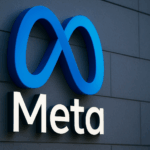Chime, the fintech company known for its cost-effectiveness and innovative banking solutions, made a significant impression with its public debut. CEO Chris Britt has vocalized his ambition for Chime, stating the goal of becoming the leading provider of primary account relationships in the United States. The company is broadening its financial services portfolio to challenge traditional banks and win over customers dissatisfied with their current banking experiences. Recent developments indicate a strategic focus on introducing new financial products and leveraging technology to enhance customer engagement.
Chime’s recent trajectory mirrors earlier efforts to differentiate itself in the financial landscape. Its distinctive appeal comes from offering low-cost services and technology-driven solutions, enabling it to serve its members at significantly lower costs than large banks. This approach continues to shape its strategy, emphasizing both scale and user-friendliness, qualities that are particularly appealing during economic uncertainties.
How is Chime Planning to Expand its User Base?
Chime’s expansion strategy centers on making it easier for new users to access its services without immediately committing to direct deposit. Enhancements such as Day One access, allowing Apple (NASDAQ:AAPL) Pay and mobile check deposits from the start, aim to improve user actuation. Britt explained that the flexibility provided lets potential customers “date a bit before they get married” to direct deposit, potentially increasing user retention and satisfaction.
What is the Impact of Earned-Wage Access Features?
Earned-wage access has become a vital part of Chime’s offering. The MyPay feature, generating significant revenue, permits users to access earned wages with options for immediate payment. The feature has rapidly gained traction, with improved loss rates driving profitability. Strong usage is boosting transaction margins, contributing positively to Chime’s overall financial performance.
Amid questions from analysts about potential data access fees set by traditional banking institutions, Britt reassured that Chime’s model maintains limited exposure due to its existing relationships with primary account holders. He emphasized,
“Consumers should be able to move their data without fees,”
reflecting confidence in Chime’s positioning. His statement aligns with recent Consumer Financial Protection Bureau perspectives, minimizing immediate concerns over additional charges impacting the company’s model.
Chime’s cost structure remains a significant competitive advantage. The company reports being able to serve customers at about a third of the cost of large banks through innovations, such as the proprietary Chime Core system and AI-enhanced support. This has allowed Chime to maintain competitive service pricing and continue developing products like Instant Loans to expand its customer base.
As a response to evolving member needs, Chime is also focusing on enhancing product offerings such as Chime Plus, its free tier providing benefits like higher savings rates and cash-back deals. Britt previously highlighted these strategic inclusions, aiming to fortify customer satisfaction and loyalty with tailored solutions.
The financial performance indicators for Chime have shown robust growth, with a 37% increase in revenue year over year, driven by both payments and platform-related revenues. CEO Britt’s perspective that Chime is appealing to “the unhappily banked” adds context to its growth narrative, further underlined by successful ambassador campaigns that have elevated brand awareness.
The insights gathered suggest Chime is determined to exploit its cost advantage and innovative product suite to capture a larger market share. Established banks might need to reassess the strengths of their offerings to effectively respond to the competitive threat posed by fintech companies like Chime. This strategic positioning serves as a reminder that adaptability and user-centric innovations are critical in maintaining relevance in the ever-evolving financial services sector.










